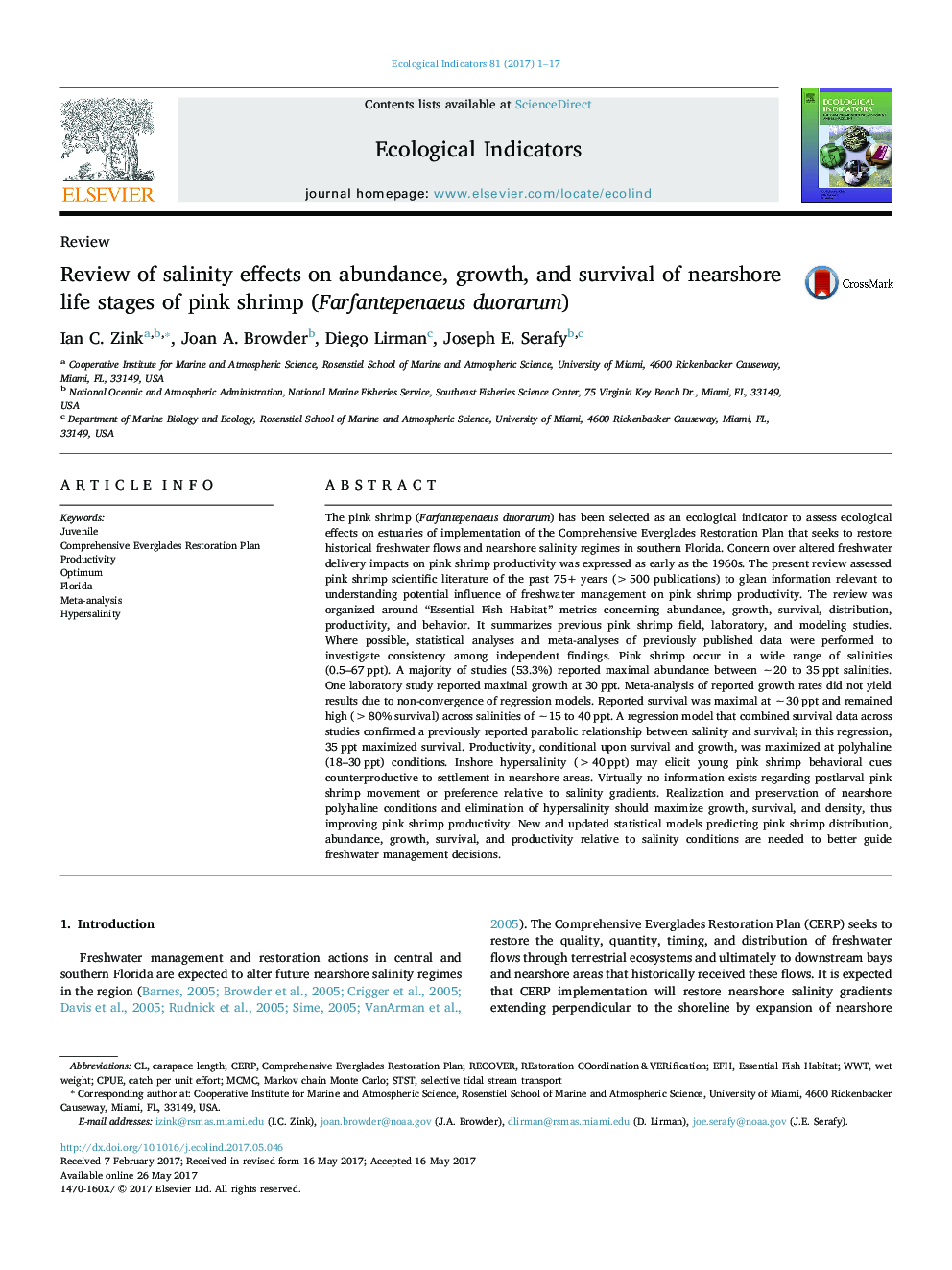| Article ID | Journal | Published Year | Pages | File Type |
|---|---|---|---|---|
| 5741405 | Ecological Indicators | 2017 | 17 Pages |
â¢Most studies reported maximal pink shrimp abundance between â¼20-35 ppt salinities.â¢Pink shrimp growth reported from the literature was maximal at â¼30 ppt.â¢Pink shrimp meta-analysis survival was >80% within 20-45 ppt with a 35 ppt maxima.â¢Reported pink shrimp productivity maximized at polyhaline (18-30 ppt) salinities.â¢Polyhalinity is optimal for pink shrimp and hypersalinity (>40 ppt) is harmful.
The pink shrimp (Farfantepenaeus duorarum) has been selected as an ecological indicator to assess ecological effects on estuaries of implementation of the Comprehensive Everglades Restoration Plan that seeks to restore historical freshwater flows and nearshore salinity regimes in southern Florida. Concern over altered freshwater delivery impacts on pink shrimp productivity was expressed as early as the 1960s. The present review assessed pink shrimp scientific literature of the past 75+Â years (>500 publications) to glean information relevant to understanding potential influence of freshwater management on pink shrimp productivity. The review was organized around “Essential Fish Habitat” metrics concerning abundance, growth, survival, distribution, productivity, and behavior. It summarizes previous pink shrimp field, laboratory, and modeling studies. Where possible, statistical analyses and meta-analyses of previously published data were performed to investigate consistency among independent findings. Pink shrimp occur in a wide range of salinities (0.5-67Â ppt). A majority of studies (53.3%) reported maximal abundance between â¼20 to 35Â ppt salinities. One laboratory study reported maximal growth at 30Â ppt. Meta-analysis of reported growth rates did not yield results due to non-convergence of regression models. Reported survival was maximal at â¼30Â ppt and remained high (>80% survival) across salinities of â¼15 to 40Â ppt. A regression model that combined survival data across studies confirmed a previously reported parabolic relationship between salinity and survival; in this regression, 35Â ppt maximized survival. Productivity, conditional upon survival and growth, was maximized at polyhaline (18-30Â ppt) conditions. Inshore hypersalinity (>40Â ppt) may elicit young pink shrimp behavioral cues counterproductive to settlement in nearshore areas. Virtually no information exists regarding postlarval pink shrimp movement or preference relative to salinity gradients. Realization and preservation of nearshore polyhaline conditions and elimination of hypersalinity should maximize growth, survival, and density, thus improving pink shrimp productivity. New and updated statistical models predicting pink shrimp distribution, abundance, growth, survival, and productivity relative to salinity conditions are needed to better guide freshwater management decisions.
